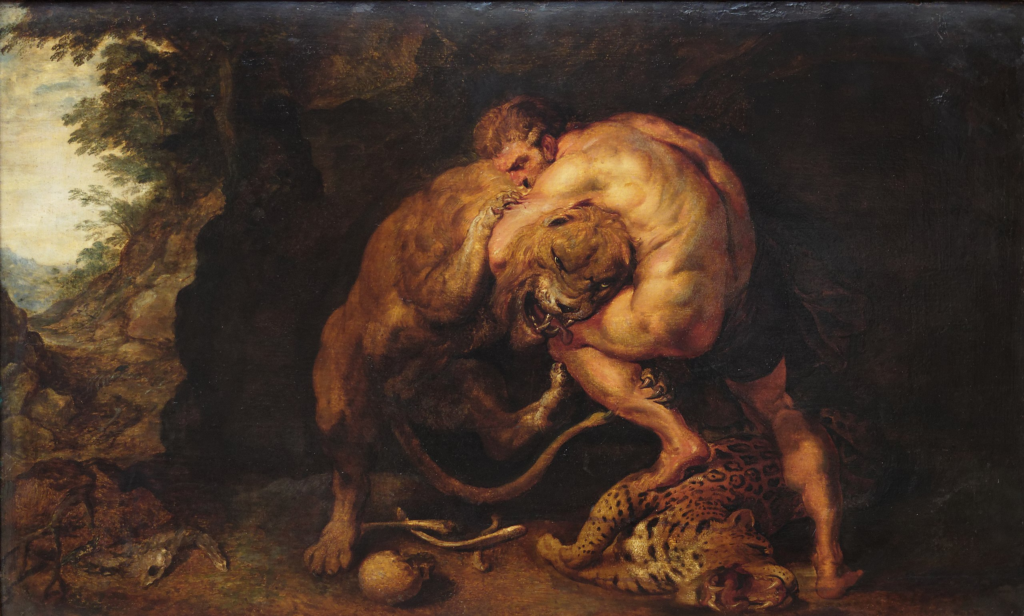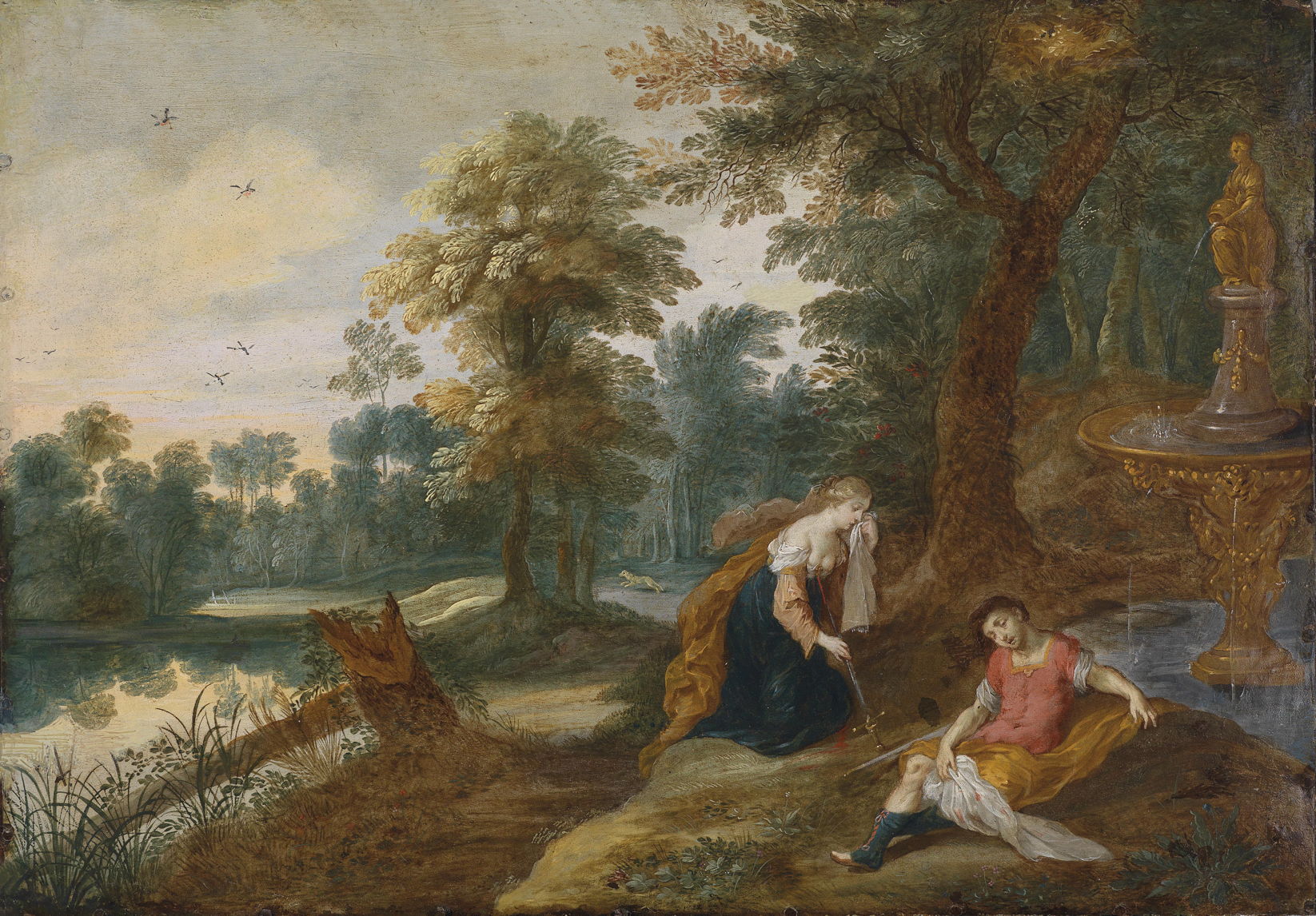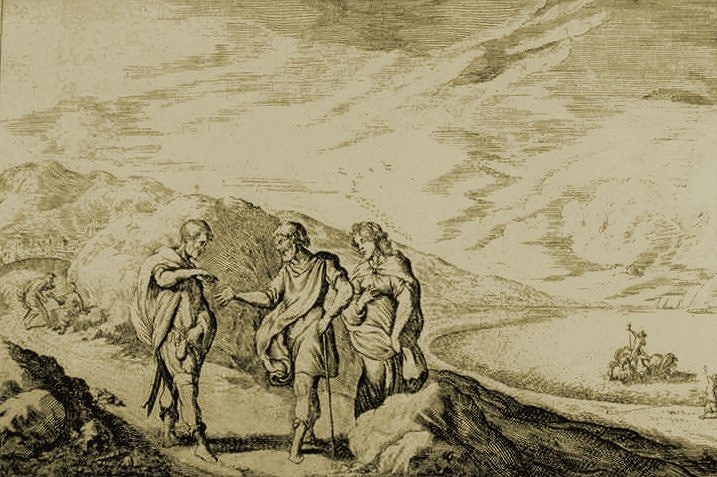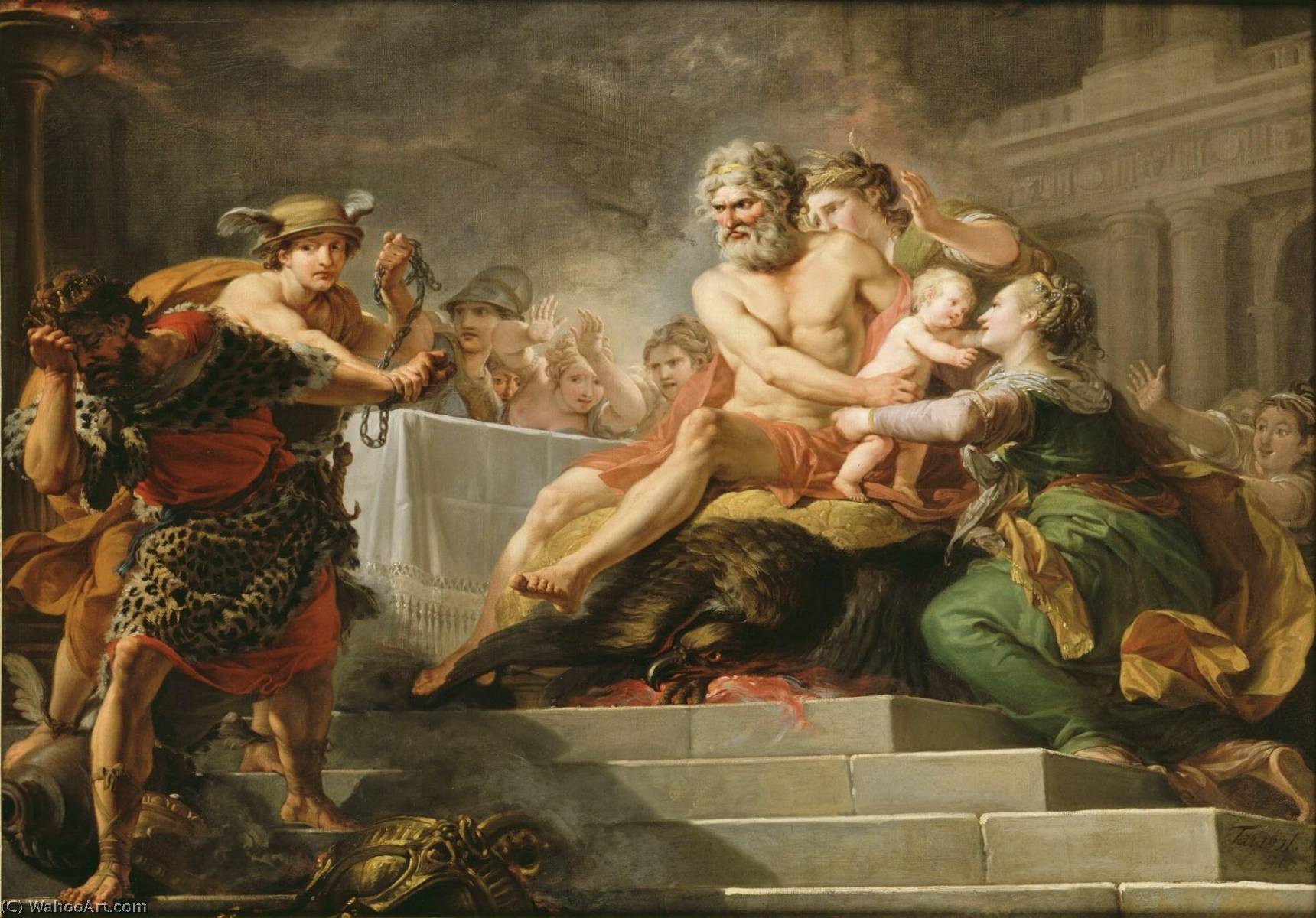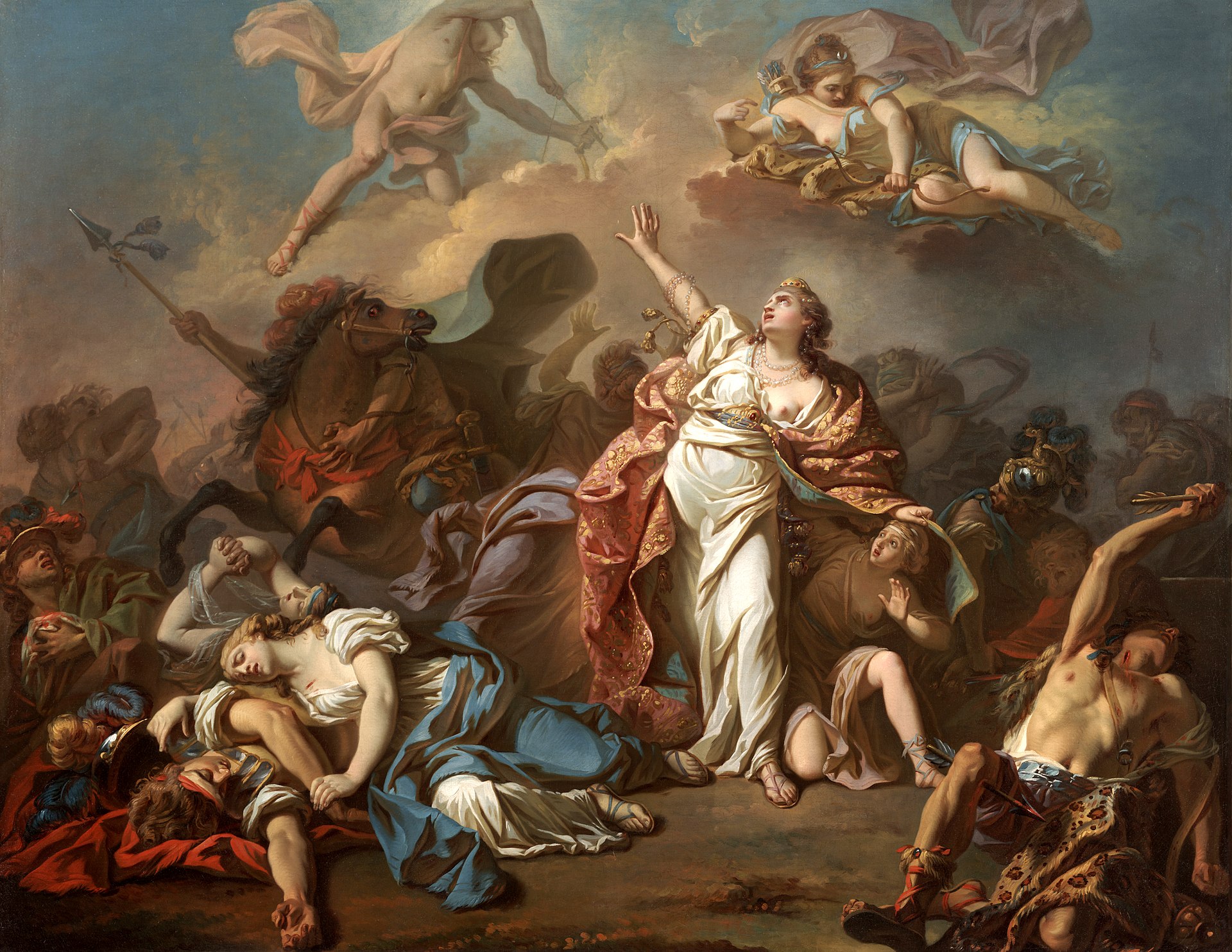In search of redemption, the mighty Hercules was tasked with 12 incredible challenges known as the 12 labors of Hercules. What were these tasks, and how did Hercules achieve them? Our article cuts through the myth to present you with each labor, explaining why Hercules’ feats remain one of the greatest stories of Greek mythology.
Key Takeaways
Hercules, born of Zeus and the mortal Alcmene, faced the jealousy and wrath of Hera from infancy. This animosity shaped his destiny and led to the initiation of his twelve labors as a form of atonement for the madness-induced murder of his family.
The twelve labors, assigned by the Oracle of Delphi and carried out under King Eurystheus’ command, were a series of daunting and seemingly impossible tasks Hercules had to complete to achieve redemption and the promise of immortality.
The 12 labors exhibited not just Hercules’ immense physical strength but also his strategic thinking, adaptability, and resilience. His completion of the labors and subsequent heroism eventually led to his deification and continued legacy in Greek mythology.
The Birth and Origins of Hercules
Hercules, known as Herakles in Greek mythology, was a hero renowned for his extraordinary strength. He was born half-god and half-human, with Zeus, the king of the gods, as his father. Zeus disguised himself as Alcmene’s husband Amphitryon to be with her. When the real Amphitryon returned, Alcmene a mortal woman conceived the twin brother: Hercules, the son of Zeus, and Iphicles, the son of Amphitryon.
Athena, the goddess of wisdom, played a crucial role in Hercules’s early life. After Alcmene abandoned her son in the wilderness to protect him from Hera’s vengeance, Athena found the infant Hercules. She brought him to Hera without revealing his true identity. Unaware that the child was Zeus’s son, Hera nursed Hercules. His powerful suckling caused Hera so much pain that she pushed him away, and her divine milk sprayed across the sky, forming the Milky Way. This event inadvertently granted Hercules his extraordinary strength.
As the grandson of the great hero Perseus, Hercules was the subject of a prophecy that foretold a descendant of Perseus would become a powerful ruler. This prophecy, alongside Hercules’s potential for greatness, fueled Hera’s anger. To preempt Hercules’s destiny, Hera hastened the birth of Eurystheus, who was born first and consequently became king instead of Hercules.
The name “Herakles” ironically means “Glory of Hera,” reflecting the complex relationship between Hercules and the goddess who detested him. Despite Hera’s relentless efforts to thwart him, from heracles blocked the serpents sent to kill him in his cradle to numerous other attempts on his life, Hercules’ story is one of triumph over divine hostility and human adversity.
The Purpose of the 12 Labors
A tragic turn of events led to the origin of Hercules’ twelve labors. Hera, still nursing her grudge confront heracles, and inflicts him with madness, leading him to murder his wife and children in a fit of insanity. Overwhelmed with guilt, Hercules sought redemption, consulting the Oracle of Delphi for divine guidance. The Oracle, aware of Hera’s desire to kill Heracles, assigned him the twelve labors as a means of atonement.
The Oracle commanded Hercules to serve King Eurystheus of Mycenae, who tasked Hercules with a series of seemingly impossible labors, often referred as the “twelve impossible tasks,” as penance. Initially, Hercules had to complete ten labours. However, king Eurystheus later disqualified two of them, extending Hercules’ redemption journey to twelve labors. The promise of immortality upon successful completion became Hercules’ beacon of hope, guiding him through these daunting trials.
Labor 1: Confronting the Nemean Lion

Hercules’ first labor, assigned to him by King Eurystheus, was to confront the Nemean Lion, a fearsome beast with impenetrable skin that terrorized the region of Nemea by luring brave men and eating them. This giant animal, placed by Hera to challenge Hercules, lured brave warriors to their deaths with its invincibility. To complete this labor, Hercules had to utilize both his immense strength and clever wit.
Faced with the impossible task of slaying this beast, Hercules discovered that conventional weapons were ineffective against the terrible monster. However, Hercules’ extraordinary strength came to his rescue, allowing him to strangle the lion to death. Furthermore, Hercules skinned the lion using its own claw and donned its hide as a cloak, with the head serving as a helmet. This invincible skin became an emblem of his triumph and a defensive armor for future challenges.
Labor 2: Battling the Lernaean Hydra

After his successful encounter with the Nemean Lion, Hercules faced an even more daunting task—the Lernaean Hydra. This fearsome creature, with its nine heads that regrew upon being cut off, haunted the marshes of Lerna and terrorized its inhabitants. Hercules, armed with flaming arrows, lured the Hydra from its lair and engaged in a battle for survival. Further complicating the task, a large crab sent by Hera distracted Hercules during the battle.
To beat it, Hercules had heracles found his nephew, Iolaus, use a burning torch to seal the necks after Heracles cut off the hydra’s heads, stopping new ones from growing. Once they defeated the Hydra, Hercules dipped his arrows in its poisonous blood, making his arrows deadly for future battles.
Labor 3: Capturing the Elusive Ceryneian Hind
The third labor required Hercules to demonstrate patience and stealth. Hercules was tasked with capturing the Ceryneian Hind, a magnificent creature with bronze hooves and golden antlers. The hind was considered sacred to the goddess Artemis. Hercules embarked on a year-long chase, tracking the elusive hind through various lands and employing an array of strategies. His persistence finally paid off when he managed to capture it without causing harm.
On his return journey, Heracles returned and encountered the deities gods Apollo and Artemis. They didn’t want their sacred deer taken away, but Apollo and Artemis accepted Hercules’ reasons for doing so. When Hercules got back, he tricked Eurystheus by saying he’d only give up the hind if Eurystheus came out and took it from him. Since Eurystheus hid and was too scared to leave his place, he never came out. This allowed Hercules to let the deer go, fulfilling his task and keeping his promise to Artemis not to harm the animal.
Labor 4: Taming the Erymanthian Boar
Hercules’ subsequent task was to capture the Erymanthian boar—a wild and unmanageable creature that terrorized the Arcadian groves and the land of Psophis. Hercules chased the wild boar around the mountain, wearing it out, and eventually driving it into deep snow.
After trapping the boar in a net, Heracles caught the live animal and carried it to Mycenae, where Eurystheus, frightened by the sight of the beast, hid Heracles killing it in a bronze vessel jar. Although this labor was successful, it was also marked by tragedy. Hercules’ friend Pholus, the centaur, accidentally dropped one of Hercules’ poisonous arrows on his foot, leading to his death and leaving Heracles stunned.
Labor 5: Cleansing the Augean Stables
Hercules’ fifth labor necessitated more than just physical prowess—it demanded strategic thinking too. His assignment was to cleanse the Augean Stables, which had accumulated filth for 30 years. To accomplish this, Hercules ingeniously diverted the paths of the rivers Alpheus and Peneus to wash through the stables.
However, this labor was marked by deceit and conflict. Hercules had made a deal with King Augeas, promising to clean the stables in a single day in exchange for a tenth of the cattle. But when Hercules accomplished the task, Augeas refused to honor his agreement, leading to a court dispute that resulted in Hercules’ favor and the installment of Augeas’ son, Phyleus, as the new king.
Labor 6: Vanquishing the Stymphalian Birds

For his sixth task, Hercules was given the mission to eliminate the deadly Stymphalian Birds—creatures known for their lethal attributes, including bronze beaks and metallic feathers used as projectiles. To overcome this challenge, Athena gave Hercules a golden sword and a pair of bronze krotalas, divine clappers made by Hephaistos.
Using these krotala, Hercules scared the birds out of hiding and efficiently shot them down with his toxic arrows, fulfilling the labor’s requirement. This labor showcased Hercules’ strategic thinking and ability to adapt to different challenges.
Labor 7: Subduing the Cretan Bull
Following this, Hercules was assigned to bring the Cretan Bull under control, a gift from Poseidon to King Minos of Crete that had turned wild and destructive after Minos failed to sacrifice it to the god. Through sheer strength and determination, Hercules managed to subdue the bull and present it to Eurystheus. However, the bull’s fate was sealed when it was later captured by the Athenian hero Theseus and killed at Marathon.
Labor 8: Overcoming the Mares of Diomedes
For his eighth labor, Hercules was tasked with overpowering the Mares of Diomedes, a pack of man-eating horses. In a grim display of poetic justice, Heracles fed Diomedes to the horses, managing to tame them by feeding them their own master, King Diomedes.
Despite the gruesome nature of this task, it demonstrated how Heracles managed to confront and overcome the most terrifying and dangerous foes. His success in this labor further solidified his status as a formidable hero.
Labor 9: Seizing the Girdle of Hippolyta
In his ninth labor, Hercules was sent into Amazon territory with a mission to acquire the Girdle of Hippolyta, a powerful Amazon queen. This magic girdle was a symbol of her mastery and power, given to Hippolyta by the god Ares for her exceptional warrior skills.
Initially, Hippolyta was willing to give the girdle to Hercules peacefully.
But Hera, who often sought to make Hercules’ tasks more difficult, intervened. She disguised herself as an Amazon warrior and spread a rumor among the Amazons that Hercules had come to kidnap their queen. Believing this falsehood, the Amazons attacked Hercules.
In the ensuing conflict, Hercules attacked and fought back, believing that Hippolyta had betrayed him and that his life was in danger. In the confusion and battle that followed, Heracles tricked his way into killing Hippolyta, took the girdle, and completed his labor under these tragic and deceitful circumstances.
Labor 10: Retrieving the Cattle of Geryon
Hercules’ tenth labor involved journeying to the far-off island of Erytheia to retrieve the famous red cattle of Geryon, a unique winged monster with three human bodies.
To reach his destination, Hercules performed incredible feats, such as creating the Strait of Gibraltar, known as the Pillars of Hercules, by parting two mountains. He navigated the sea in a golden cup borrowed from the sun god Helios, a vessel that glided across the waters with divine grace.
Upon arriving at Erytheia, Hercules encountered fierce resistance. He first dispatched Orthrus, the vicious two-headed dog, with a swift blow. Then he overcame Eurytion, the herdsman who watched over the herd before finally suppressing Geryon and capturing the cattle.
On his way back, he had to recover part of the herd from the fire-breathing giant Cacus, who had stealthily stolen them. With his strength and wits, Hercules emerged victorious, slaying Cacus and securing the cattle once more.
Labor 11: Acquiring the Golden Apples of the Hesperides

In his eleventh labor, Hercules was tasked with the formidable challenge of procuring the Golden Apples from the Garden of the Hesperides. This was no mean feat, as the apples were considered divine and were zealously guarded by a hundred-headed dragon named Ladon, as well as by the Hesperides, nymphs who were daughters of the evening.

To accomplish this near-impossible task, Hercules embarked on a journey leading him to the world’s northern edge. Along the way, he encountered Prometheus, who was suffering a terrible punishment for bestowing fire upon humanity. Hercules, moved by the Titan’s situation, slew the eagle and freed prometheus him from his eternal torture. In gratitude, Prometheus advised Hercules on how to obtain the Golden Apples, suggesting that he seek the help of Atlas, the Titan who bore the weight of the heavens.
He encountered Atlas, the Titan burdened with the eternal punishment of holding up the sky. Heracles persuaded atlas, offering to hold the heavens for a while if the Titan would fetch the golden apples for him. Atlas agreed, relieved to be free from his burden, even temporarily. However, upon returning with the apples, Atlas attempted to leave Hercules in his stead permanently. Quick-witted Hercules pretended to agree but asked Atlas for a brief respite to make a place to ease the burden on his shoulders. As soon as Atlas lifted the heavens again, Hercules snatched the apples and made a hasty retreat, outwitting the Titan and accomplishing his labor.
Labor 12: Capturing Cerberus, Guardian of the Underworld

Arguably the most daunting of all, Hercules’ final labor involved capturing Cerberus, the three-headed dog that guarded the gates of the Underworld. Despite the seemingly impossible nature of this task, Hercules managed to wrestle Cerberus into submission without using weapons, as stipulated by Hades.
When Hercules presented Cerberus to Eurystheus, he was relieved of his duties, and upon the return of Cerberus to the Underworld, he was promised immortality upon his death. Thus, Hercules’ labors concluded, symbolizing his redemption and transformation into a true hero.
Life After the 12 Labors
The Greek myth of Hercules’ heroic journey did not conclude with the completion of his twelve labours. He embarked on various adventures, including rescuing the princess of Troy from a sea monster and assisting Zeus in defeating the Giants in a significant battle for control of Mount Olympus.
Hercules’ mortal life ended tragically, but he was forgiven for his crimes and made immortal. As a result, he went to live on Mount Olympus with his father Zeus. His heroic deeds and the lessons we can glean from them live on in the annals of Greek mythology and continue to inspire countless generations.
Lessons From The 12 Labors of Hercules
Heracles set valuable life lessons from his labors. It underscores the power of perseverance, the possibility of redemption, and the importance of confronting and overcoming adversity. Each labor, in its own unique way, symbolizes a challenge that Heracles overcame, showcasing his courage, strength, and wit.
Furthermore, Hercules’ journey teaches us that heroism is not solely about physical strength but also about intelligence, strategy, and resilience. Despite experiencing numerous setbacks, Hercules never wavered in his quest for redemption and immortality.
Frequently Asked Questions
What are the 12 Labours of Hercules in order?
The 12 Labors of Hercules, in order, are: slaying the Nemean Lion, slaying the Lernaean Hydra, capturing the Ceryneian Hind, capturing the Erymanthian Boar, killing the Stymphalian Birds, capturing the Cretan Bull, and stealing the Mares of Diomedes (Apollodorus).
Why did Heracles accomplish his 12 labors?
Heracles accomplished his 12 labors as a way to atone for the crimes he committed in a fit of madness, including the murder of his wife and children, as instructed by Apollo. This was a penance imposed upon heracles brought upon him by the king of Mycenae.

